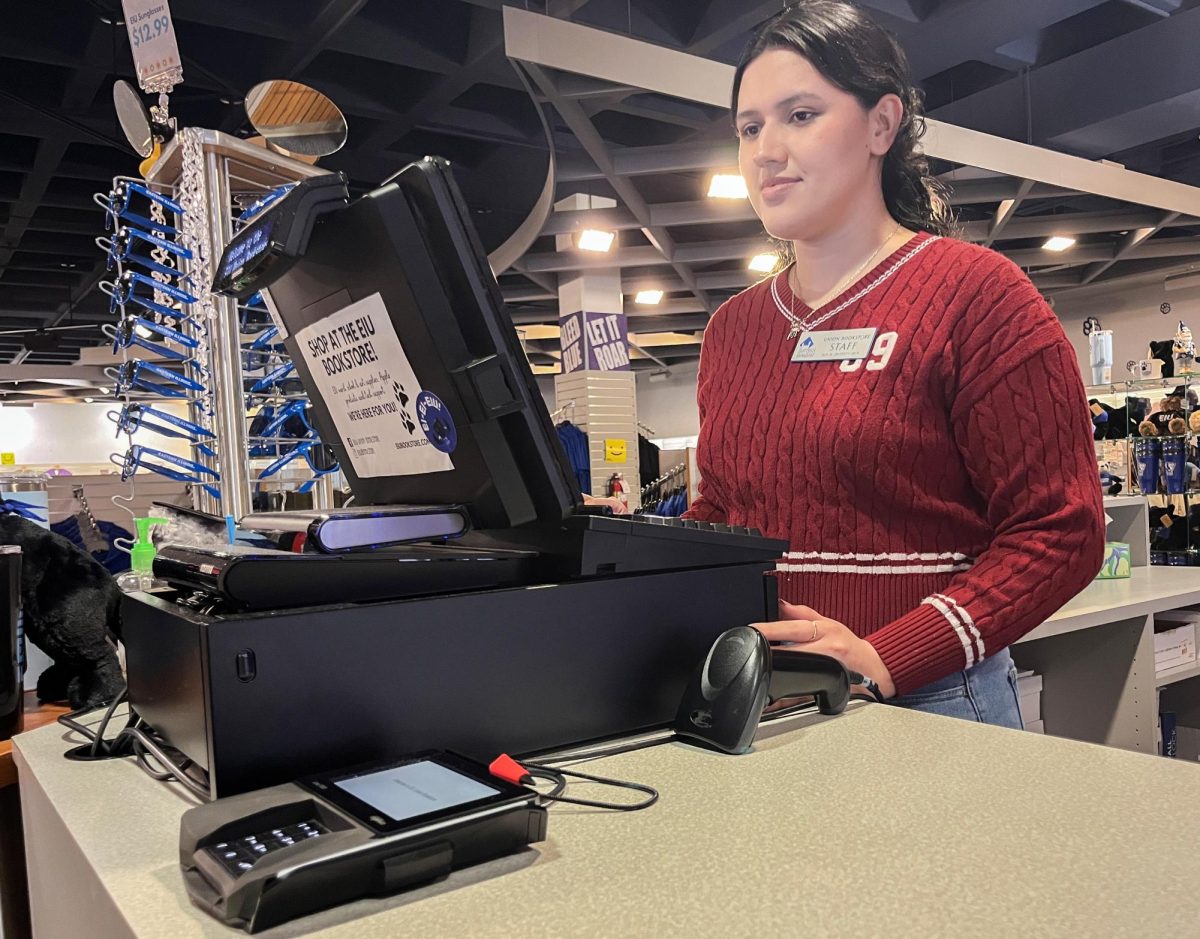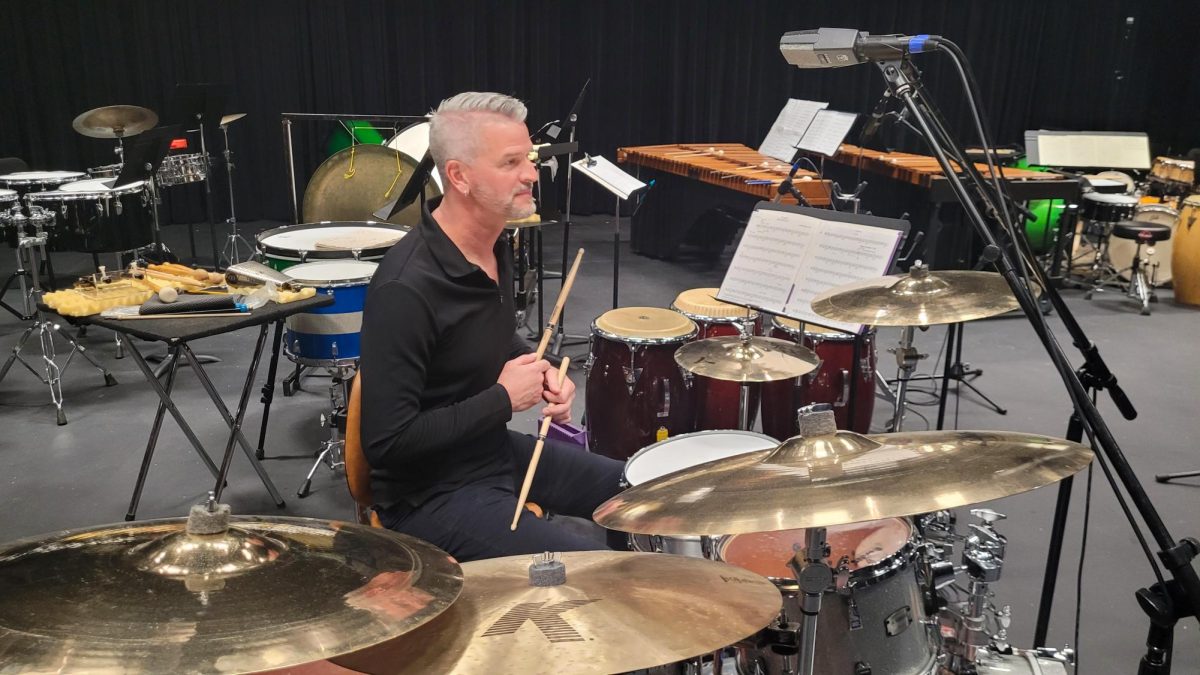COLUMN: Lessons learned in residential solar
Dan Hahn is a graduate student studying English and can be reached at 217-581-2812.
November 9, 2022
In the community where I live, we have participated in a group buy program allowing residents to leverage a bulk discount for purchasing solar panels.
In conjunction with the group buy, Illinois has Solar Renewable Energy Credits (or SRECs), plus there are federal tax rebates that make buying solar panels a very attractive long-term investment.
Illinois also has a program called Net Metering, which means that the power company will give you credits if your solar panels produce more power than you use, and will apply them to future bills.
This is a great financial incentive, and the best way I heard it explained is that most residential systems will produce surplus energy in the summer when the days are longest, break even in the fall and spring, and use the Net Metering credits in the winter when the days are shortest.
Hence, your electricity costs can be greatly reduced or eliminated if you have solar panels.
There are other considerations, of course, besides the financial opportunities and rebates, like the amount of exposure your roof has to the sun and the age of your roof.
I realize many Daily Eastern News readers may not be home owners, but if you are or know someone interested, Google’s Project Sunroof is a good place to start for someone considering residential solar panels.
It’s also a good idea to research community programs like a group buy, as well as reach out to local vendors to evaluate competing bids. Because of the incentives I outlined above, Illinois is a very competitive market and companies are eager for your business.
Google’s Project Solar must use some kind of artificial intelligence for evaluating satellite imagery. In my case, a company needed to fly a drone over the house since I reside in a newer subdivision.
Generally speaking, in the northern hemisphere, solar panels face southward, but this rule doesn’t apply universally, and a system can still generate a significant amount of electricity by pointing panels in other directions.
Roof layouts vary, and vendors will provide configurations of solar panels for your unique roof. Depending on the size of the system, you may even have multiple arrays. In my case, we opted for an array on the south facing roof of the garage as well as the west facing roof on the back of the house.
This brings us to the running of electrical wiring and conduit. This aspect will be the least complicated with a single array. In my case, the system requires that two arrays be connected and then joined with the main power line for the house.
Electricians can run the conduit outside your house along the siding and/or roof, and even penetrate the exterior and run conduit through your attic.
As I’ve become more conversant about these systems, I now look closely at other houses with solar panels and I’ve seen installations with no visible conduit on a house’s siding or roof, and I’ve seen other systems installed with very little regard for the aesthetics.
In some cases they’ll run conduit externally using a shepherd’s hook to go around the top of a roofline instead of penetrating the house and making connections internally in the attic space.
One electrician I spoke to said it’s best to keep conduit external to protect the house from the elements, while another I spoke to confidently disagreed. Muddying my experience, these electricians both worked for the same company!
Here’s a good lesson in many areas of life: when in doubt, get a second opinion. If you are particular about the looks of your system and the conduit, then be sure to work with your vendor to get exactly what you want.
If you do get solar panels there will be a project manager coordinating the details and installation timeline between you, the utility company, and their staff.
In my case, there was a miscommunication during conduit installation that could have been avoided. To address this, we took pictures of our siding and sketched on a printout to make sure they knew exactly how we wanted conduit to be run.
A key lesson for me is that even with the fancy drone images of how the solar panels would be oriented on the roof, the critical diagram used for determining how the two arrays would be wired was not drafted by the company, but by the homeowner using a cell phone camera, black and white laser printer, and colored markers.
Of course, there are many other factors you can consider when evaluating solar. Different companies provide different solar inverters and panels, with different warranties on the equipment and the labor.
It can be quite dizzying, and for me I tried to focus on the amount of electricity the system would produce and the price.
Installation is a key consideration, and while solar companies have high tech tools like satellite imagery and drones, they also have staff that you will need to work with.
Ideally there will be diagrams of the electrical conduit—perhaps some companies provide these—so that expectations are clearly set, and there are no surprises or unnecessary setbacks.
Dan Hahn is a English composition and rhetoric gradute student. He can be reached at dhahn@eiu.edu or 217-581-2812.













![[Thumbnail Edition] Junior right-handed Pitcher Lukas Touma catches at the game against Bradley University Tuesday](https://www.dailyeasternnews.com/wp-content/uploads/2025/03/MBSN_14_O-e1743293284377-1200x670.jpg)

![[Thumbnail Edition] Senior Foward Macy McGlone, getsw the ball and gets the point during the first half of the game aginst Western Illinois University,, Eastern Illinois University Lost to Western Illinois University Thursday March 6 20205, 78-75 EIU lost making it the end of their season](https://www.dailyeasternnews.com/wp-content/uploads/2025/03/WBB_OVC_03_O-1-e1743361637111-1200x614.jpg)







































![The Weeklings lead guitarist John Merjave [Left] and guitarist Bob Burger [Right] perform "I Am the Walrus" at The Weeklings Beatles Bash concert in the Dvorak Concert Hall on Saturday.](https://www.dailyeasternnews.com/wp-content/uploads/2025/03/WL_01_O-1200x900.jpg)
![The team listens as its captain Patience Cox [Number 25] lectures to them about what's appropriate to talk about through practice during "The Wolves" on Thursday, March 6, in the Black Box Theatre in the Doudna Fine Arts Center in Charleston, Ill.](https://www.dailyeasternnews.com/wp-content/uploads/2025/03/WolvesPre-12-1200x800.jpg)

















